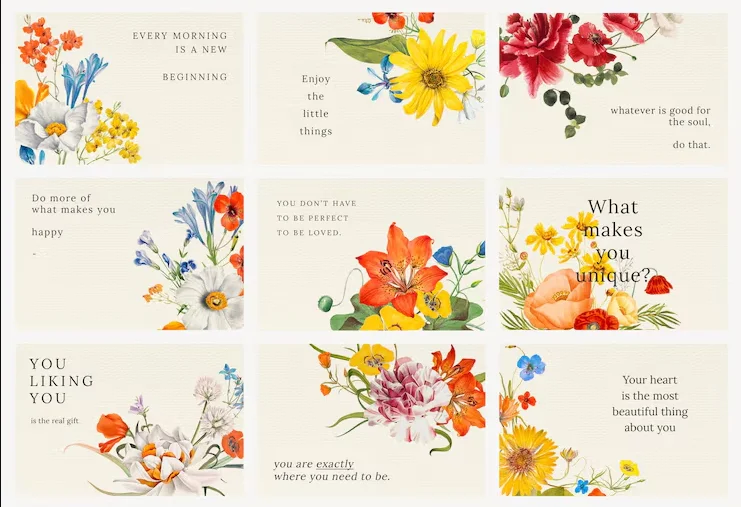Birth Flowers: Meaning, Symbolism & Significance
Flowers have long held deep symbolic meanings in cultures around the world. Beyond their beauty, they convey emotions, celebrate milestones, and even reflect personality traits. One of the most intriguing traditions is the concept of birth flowers – specific flowers associated with each month of the year. Much like birthstones, birth flowers carry symbolic significance and are often used in gifts, celebrations, and personal expression.
In this article, Portal Kahwin explores the origin, symbolism, and detailed list of birth flowers for each month, helping readers understand their meanings and cultural significance.
What Are Birth Flowers?
Birth flowers are flowers traditionally associated with a person’s month of birth. Each flower embodies traits, virtues, or emotions that the month represents. For example, a person born in January may have the Carnation as their birth flower, symbolizing love and fascination.
These flowers have been celebrated in art, literature, and culture for centuries, and today they are commonly used in bouquets, gifts, wedding décor, and personal celebrations.
Origins of Birth Flowers
The concept of birth flowers has roots in both Western and Eastern traditions.
- Western Tradition: In Europe, the idea of associating flowers with months became popular during the Victorian era, a time when flowers were used to convey specific messages through the “language of flowers” or floriography.
- Eastern Tradition: In Asia, flowers are linked to zodiac signs and seasonal cycles, often reflecting harmony with nature and personal destiny.
The modern birth flower calendar is widely recognized globally, with each month linked to one or more symbolic flowers.
Birth Flowers by Month
January – Carnation
- Meaning: Love, fascination, and distinction
- Significance: Carnations represent admiration and enduring love, making them a popular choice for birthdays and celebrations.
February – Violet & Primrose
- Meaning: Loyalty, faithfulness, and young love
- Significance: These flowers symbolize sincerity and devotion, reflecting emotional depth and creativity.
March – Daffodil
- Meaning: Rebirth, new beginnings, and prosperity
- Significance: Associated with spring, daffodils signify renewal and optimism.
April – Daisy & Sweet Pea
- Meaning: Innocence, purity, and joy
- Significance: These cheerful flowers express simplicity and heartfelt happiness.
May – Lily of the Valley & Hawthorn
- Meaning: Sweetness, humility, and happiness
- Significance: May flowers symbolize springtime beauty and gentle affection.
June – Rose & Honeysuckle
- Meaning: Love, passion, and devotion
- Significance: Roses are universally associated with love, while honeysuckle represents bonds and enduring affection.
July – Larkspur & Water Lily
- Meaning: Positivity, grace, and lightheartedness
- Significance: Larkspurs symbolize open-heartedness, while water lilies reflect purity and spiritual enlightenment.
August – Gladiolus & Poppy
- Meaning: Strength, integrity, and remembrance
- Significance: Gladiolus represents honor and remembrance, while poppies are linked to consolation and hope.
September – Aster & Morning Glory
- Meaning: Wisdom, patience, and love
- Significance: Asters reflect deep emotional bonds, and morning glories symbolize affection and renewal.
October – Marigold & Calendula
- Meaning: Creativity, warmth, and passion
- Significance: These vibrant flowers symbolize optimism and celebratory energy.
November – Chrysanthemum
- Meaning: Friendship, loyalty, and joy
- Significance: Chrysanthemums are celebrated for their enduring beauty and represent honor and fidelity.
December – Narcissus & Holly
- Meaning: Hope, cheerfulness, and protection
- Significance: These flowers embody positivity, festive spirit, and resilience during winter months.
Why Birth Flowers Matter
- Personalized Gifts: Knowing someone’s birth flower makes gifts more meaningful.
- Cultural Significance: Birth flowers carry symbolism that transcends borders, making them popular in weddings and global celebrations.
- Self-Expression: People often choose birth flowers for tattoos, décor, and fashion to reflect personal traits.
- Educational Value: Understanding flowers helps cultivate appreciation for nature and cultural traditions.
Fun Ways to Celebrate Birth Flowers
- Create personalized bouquets for birthdays or anniversaries.
- Incorporate birth flowers into wedding décor for symbolism and elegance.
- Use birth flower motifs in stationery, clothing, or jewelry.
- Share the history and meaning of the flower to add a storytelling element to celebrations.
Conclusion
Birth flowers are more than decorative plants; they are carriers of symbolism, tradition, and emotion. Whether for personal reflection, gifts, or cultural celebrations, understanding your birth flower provides insight into personality traits, emotional values, and aesthetic appreciation.
For those celebrating globally, incorporating birth flowers into life events adds a timeless layer of beauty and meaning, connecting tradition with modern expression.
